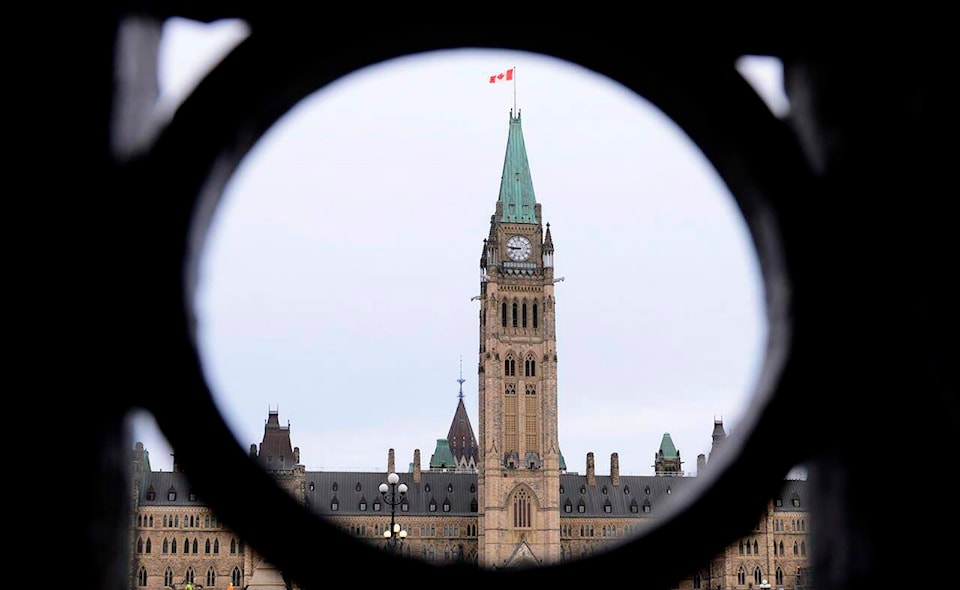~BW Uzelman
The Liberal government gave up any pretensions of balancing the budget some time back. The government has not even committed to reducing deficits in recent years. The only fiscal anchor they still pledged to uphold was a declining federal debt-to-GDP ratio. Now that is gone too. The new federal budget projects the ratio to increase from 42.4% in 2022-2023 to 43.5 per cent in 2023-2024. Only then is it projected to begin to decline, reaching 39.9 per cent in 2027-28.
The government clearly is in a position where it could not provide sufficient spending for crucial policy files. That, however, is a problem of their own making. They have been overspending, if not since they came to office, then certainly since 2020-2021. Before the pandemic, they began a massive expansion of the public service that still has not abated. During the pandemic, they introduced overly generous benefits, offered them to too many recipients and continued them for too long.
The deficit in 2020-2021 was well over $300 billion. A National Bank study showed Canada had the largest deficit increase as a percentage of economic output of all G20 countries. At over 19%, it was substantially larger than second place Britain at 15% and third place United States at near 13%. The government continued to exercise little restraint. In 2021-2022 the deficit was $95 billion, and in 2022-2023 was $36 billion. The budget forecasts the deficit to be $40.1 billion this fiscal year. Mostafa Askari, chief economist of The Institute of Fiscal Studies and Democracy, challenges this. He told the Globe and Mail, “My overall assessment is that the deficit is going to be higher than what they are showing.”
Debt levels of course have soared, as have interest charges. Federal debt last year topped $1.1 trillion. The budget projects debt charges of almost $44 billion in 2023-2024 to increase to $50 billion by 2027-2028. That creates further budgetary challenges.
Then came the second spending binge. The 2021 election resulted in a Liberal minority government. To retain power, the Liberals negotiated a Supply and Confidence agreement with the NDP. It committed the government to launch a new dental care program and a universal, national pharmacare plan.
That was only the start. In the U.S., President Joe Biden and the Democrats implemented subsides for purchasing electric vehicles and loans and tax rebates for investment in clean energy, manufacturing and technology industries. In Canada, the government’s own climate goals, and the need to keep capital from fleeing to the U.S., led it to commit to similar programs. In the 2022 and the 2023 budgets, the Liberals announced the $15 billion Canada Growth Fund to invest in the clean economy, and $21 billion in investment tax credits for clean energy and clean technology manufacturing over five years.
In both 2022 and 2023, the government increased GST credits to support Canadians with affordability problems caused by inflation. Necessary new healthcare funding will result in an additional federal expenditure of $46.2 billion over ten years. The Liberals long-delayed purchase of F35 Fighter Jets and upgrade of the North Warning System were essential investments. So too were housing programs added in 2022, $10 billion over five years. With all these commitments, something had to be sacrificed.
First, our pledge to our NATO partners to spend 2% of GDP on defense remains unfulfilled, this as global threats have proliferated. Canada’s ability to defend the North remains critically deficient, while Russia and China have improved their Arctic military capabilities. Second, record levels of immigration have necessitated funding for housing, beyond that added in 2022. CMHC notes, “The national vacancy rate for purpose-built rental apartments dropped from 3.1% in 2021 to 1.9% in 2022.” An RBC Economics study stated that if housing construction does not accelerate, the current shortage of 30,000 units could quadruple by 2026. The 2023 budget added no funds for defense or for comprehensive housing support.
The budget acknowledges that the federal debt-to-GDP ratio will increase this year. Not acknowledged is that this ratio understates government debt in Canada relative to other countries. Craig Alexander, who served as chief economist at Deloitte Canada, writes that aggregate debt – federal plus provincial debt – is what matters. He notes it is more suitable for international comparisons because many of Canada’s fiscal priorities are at the provincial level, but are at the national level in other countries.
The aggregate debt is over $2 trillion, says Alexander. He adds, “Combined federal-provincial debt has roughly doubled since 2007 and the aggregate government-to-GDP ratio was likely around the 75-per-cent mark in 2022.” P.M. Trudeau has justified the federal debt-to-GDP ratio by saying it is lower than that in other countries. That’s not the whole story. Compare the aggregate rates, Mr. Prime Minister.
bruce
Bruce W Uzelman
I grew up in Paradise Hill, a village in Northwestern Saskatchewan. I come from a large family. My parents instilled good values, but yet afforded us, my seven siblings and I, much freedom to do the things we wished to do. I spent my early years exploring the hills and forests and fields surrounding the village, a great way to come of age.
I attended the University of Saskatchewan in Saskatoon. I considered studying journalism at one point, but did not ultimately pursue that. However, I obtained a Bachelor of Arts, Advanced with majors in Economics and Political Science in 1982.
Contact: urbangeneral@shaw.ca
Like us on and follow us on .



